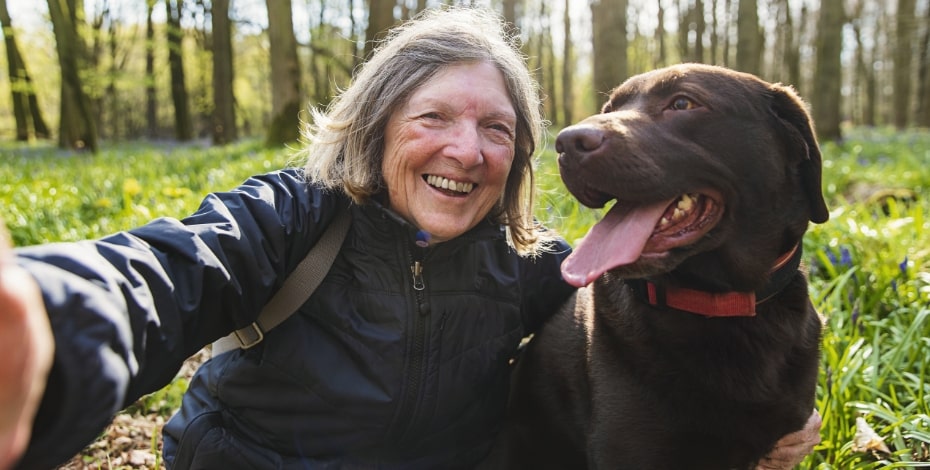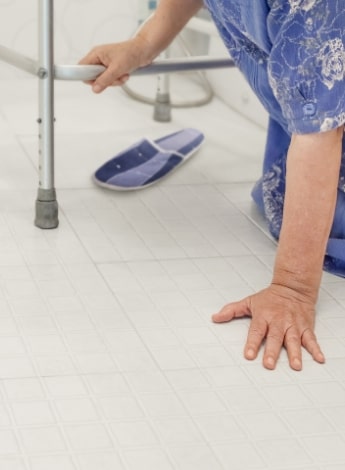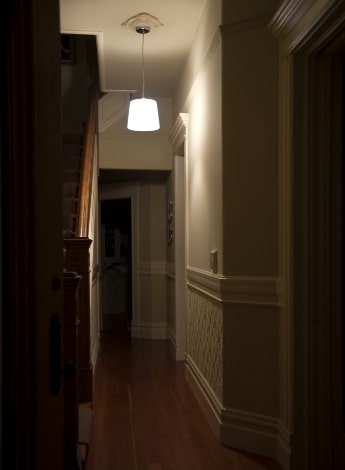
5 Facts about physiotherapy and incontinence in older people

Lauren Neill, Sarah Myles and Leanne Slater of the APA Women’s, Men’s and Pelvic Health national group write about the effects of urinary and faecal incontinence on health and quality of life for older people and what kinds of treatment and management physiotherapy can offer.
It’s never too late to start pelvic floor exercises
Ageing and menopause have been linked to muscle atrophy and reduced pelvic floor muscle strength (Alperin et al 2016, Weemhoff et al 2010).

Despite being the recommended first-line treatment for urinary incontinence (Dumoulin et al 2017), pelvic floor muscle training is not always recommended to older patients, who are more often treated with medications or surgery (Suskind et al 2022).
This may be because older patients are more likely to have severe urinary symptoms or mixed urinary incontinence or simply because of their age (Cacciari et al 2022).
A recent article by Cacciari et al (2022) asked: is it too late to train pelvic floor muscles in older women?
The study found that pelvic floor muscle training in older patients resulted in a reduced levator hiatus area, which was related to improved pelvic floor muscle strength and force and decreased urinary incontinence symptoms.
As this is the first study to look at age and pelvic floor muscle strengthening outcomes, conclusions need to be interpreted with caution.
However, pelvic floor muscle training is unlikely to have any negative outcomes when individually prescribed and supervised.
To quote Cacciari et al (2022), ‘one cannot be too old, too incontinent, or too overweight to benefit from PFM training’.
Bladder and bowel incontinence increases the risk of falls
There is a statistically significant association between urinary and faecal incontinence and falls in older people.

The premise for incontinence increasing falls risk is not well established; however, it is proposed to be a combination of impaired mobility, reduced balance and altered gait while rushing to the toilet due to bladder or bowel urgency.
Urinary urgency and nocturia (needing to wake in the night to urinate) are associated with a 1.2-fold increased risk of falls and potentially a 1.3-fold increased risk of fractures.
There also appears to be an increased risk of falls in people with stress urinary incontinence.
Theoretically, this could be attributed to adverse movement patterns aimed at preventing leakage while transitioning or mobilising.
The World Falls Guidelines Task Force recommends routine screening of older people with the 3 Incontinence Questions tool to help identify the presence and type of urinary incontinence.
Further screening using the Revised Faecal Incontinence Scale is also warranted to identify faecal incontinence.
If incontinence is present, the next step is further assessments and referrals where appropriate to urologists, gynaecologists, gastroenterologists, colorectal surgeons, continence nurses and pelvic floor physiotherapists.
In the short term, simple interventions such as timed voids with reminders, bowel routines and bedside commodes may reduce the risk of falls associated with incontinence.
Incontinence is linked to social isolation, depression and declining health in older people
Incontinence has been ranked among the four most distressing disorders in older people.

Urinary and/or faecal incontinence can severely affect quality of life.
It can lead to a sense of shame, embarrassment and avoidance of disclosure to health professionals, family or friends due to the social stigma.
Research shows that incontinence in older people increases depression and anxiety and decreases life satisfaction, self- esteem and self-reported overall health compared to age- matched continent people.
Avoidance of social activities and the loss of intimate social relationships are also seen in older people with incontinence, who frequently report feeling socially isolated and convey significant loneliness.
Older people with incontinence often fear others noticing leakage and/or odour and may eschew all activities outside the home, including physical activity.
Subsequent declines in physical performance over time predispose older people to a multitude of health conditions and reduce independence.
If incontinence is not well managed in older people, it can lead to an increase in global functioning impairments and in home care placement and institutional care.
Considering that incontinence can respond favourably to behaviour modifications, pelvic floor exercises, bladder training, medications and dietary adjustments, timely assessment and effective management are imperative.
Nocturia can be a sign of complex health problems
Nocturia is a lower urinary tract symptom defined by the International Continence Society as the need to void one or more times during the night (van Kerrebroeck et al 2002). While it can be a normal part of ageing, it can also be a sign of more complex health problems that require medical referral (Buddeke et al 2012).

Nocturia is associated with a range of health conditions, including diabetes, kidney disease, heart failure and sleep apnoea (Goren et al 2013, Lee & Kim 2017). A study published in the Journal of the American Medical Association found that nocturia was associated with a greater risk of developing type 2 diabetes (Goren et al 2013).
This is because nocturia can lead to increased levels of cortisol, a stress hormone that may interfere with insulin sensitivity (Goren et al 2013).
Nocturia is also a symptom of more benign conditions such as urinary tract or bladder infections.
However, if it is persistent or accompanied by other symptoms such as pain or difficulty urinating, then medical attention is required.
It is important to be aware of the potential health risks associated with nocturia and to seek medical attention if necessary.
Incontinence in older people is often under-reported and undertreated
Incontinence is a common condition among older people and its prevalence increases with age (Markland et al 2010, Abrams 2017).

Studies have shown that up to 50 per cent of adults over the age of 65 experience urinary or faecal incontinence at some point in their lives (Goode et al 2010).
Despite this, incontinence is often under- reported and undertreated in the older population.
One reason could be the social stigma associated with the condition, which can cause people to feel ashamed or embarrassed about their symptoms.
Additionally, some older adults may view incontinence as a normal part of ageing and therefore not seek medical attention.
Undertreatment of incontinence in older people can lead to significant health consequences, including skin breakdown, urinary tract infections and social isolation (Abrams 2017).
There are several treatment options available for incontinence, including physiotherapy, medication and surgery.
However, healthcare providers may be hesitant to discuss these options with older adults due to the belief that the condition is an inevitable part of ageing (Goode et al 2010).
Given the high rates of under-reporting and undertreatment of incontinence, healthcare providers should be actively screening for incontinence and offering appropriate treatment choices to improve the quality of life for older adults.
Lauren Neill APAM MACP is an APA Women’s, Men’s and Pelvic Health Physiotherapist and the owner of and senior physiotherapist at Women’s Health Physio Mackay.
Sarah Myles APAM is a physiotherapist at Townsville University Hospital working in women’s, men’s and pelvic health.
Leanne Slater APAM is a physiotherapist in Brisbane, with a special interest in pelvic health.
She has completed her Master of Clinical Physiotherapy (Continence and Women’s Health) at Curtin University and is currently working at the QLD Pelvic Floor Centre.
- References
-
Alperin M, Cook M, Tuttle LJ, Esparza MC, Lieber RL. Impact of vaginal parity and aging on the architectural design of pelvic floor muscles. Am J Obstet Gynecol. Sep 2016;215(3):312 e311-319.
Weemhoff M, Shek KL, Dietz HP. Effects of age on levator function and morphometry of the levator hiatus in women with pelvic floor disorders. Int Urogynecol J. Sep 2010;21(9):1137-1142.
Dumoulin C, Adewuyi T, Booth J, et al. Adult conservative management. In: Abrams P, Cardozo L, Wagg A, Wein A, eds. Incontinence: 6th Edition. Bristol, UK: International Continence Society (ICS) and International Consultation on Urological Diseases (ICUD); 2017:1443-1628.
Cacciari LP, Morin M, Mayrand MH, Dumoulin C. Never Too Late to Train: The Effects of Pelvic Floor Muscle Training on the Shape of the Levator Hiatus in Incontinent Older Women. Int J Environ Res Public Health. Sep 4 2022;19(17).
Suskind, AM, T V, W G, et al. International Continence Society white paper on ethical considerations in older adults with urinary incontinence. . Neurourol Urodyn. 2022;41(1):14-30.
Brown, H. W., Braun, E. J., Wise, M. E., Myers, S., Li, Z., Sampene, E., & Rogers, R. G. (2019). Small-group, community-member intervention for urinary and bowel incontinence: a randomized controlled trial. Obstetrics and gynecology, 134(3), 600.
Deb, B., Prichard, D.O. and Bharucha, A.E., 2020. Constipation and fecal incontinence in the elderly. Current gastroenterology reports, 22, pp.1-16.
Elashri, N. I. E. A., & Elfadawy, H. A. M. (2020). Fecal incontinence frequency, severity and it's impact on quality of life of elderly patients. J Nurs Health Sci, 9(3), 51-61.
Elashri, N.I.E.A. and Elfadawy, H.A.M., 2020. Fecal incontinence frequency, severity and it's impact on quality of life of elderly patients. J Nurs Health Sci, 9(3), pp.51-61.
Montero-Odasso, M., van der Velde, N., Martin, F. C., Petrovic, M., Tan, M. P., Ryg, J., & Masud, T. (2022). World guidelines for falls prevention and management for older adults: a global initiative. Age and ageing, 51(9), afac205.
Moon, S., Chung, H.S., Kim, Y.J., Kim, S.J., Kwon, O., Lee, Y.G., Yu, J.M. and Cho, S.T., 2021. The impact of urinary incontinence on falls: A systematic review and meta-analysis. PLoS One, 16(5), p.e0251711.
Parker-Autry, C., Leng, I., Matthews, C. A., Thorne, N., & Kritchevsky, S. (2022). Characterizing the physical function decline and disabilities present among older adults with fecal incontinence: a secondary analysis of the health, aging, and body composition study. International urogynecology journal, 33(10), 2815-2824.
Schluter, P. J., Ward, C., Arnold, E. P., Scrase, R., & Jamieson, H. A. (2017). Urinary incontinence, but not fecal incontinence, is a risk factor for admission to aged residential care of older persons in New Zealand. Neurourology and Urodynamics, 36(6), 1588-1595.
Yip, S. O., Dick, M. A., McPencow, A. M., Martin, D. K., Ciarleglio, M. M., & Erekson, E. A. (2013). The association between urinary and fecal incontinence and social isolation in older women. American journal of obstetrics and gynecology, 208(2), 146-e1.
Buddeke, J., Van Der Meijden, W. A., & Wijkstra, H. (2012). Nocturia: risk factors and associated comorbidities; a review of the current literature. BJU international, 110(s3), 2-8.
Goren, A., Liu, X., & Heaney, J. A. (2013). The association between nocturia and diabetes: a systematic review and meta-analysis. The Diabetes Educator, 39(5), 655-667.
Lee, C. T., & Kim, D. Y. (2017). Nocturia: current evaluation and treatment. Korean journal of urology, 58(5), 291-299.
van Kerrebroeck P, Abrams P, Chaikin D, Donovan J, Fonda D, Jackson S, et al. The standardisation of terminology in nocturia: report from the Standardisation Sub-committee of the International Continence Society. Neurourol Urodyn 2002;21:179-83.
Markland AD, Goode PS, Burgio KL, et al. Incidence and Risk Factors for Fecal Incontinence in Black and White Adults: A Population-Based Study. J Am Geriatric Soc. 2010;58(7):1341-1346.
Goode PS, Burgio KL, Richter HE, et al. Incontinence in older women. JAMA. 2010;303(21):2172-2181.
Abrams, P, Cardozo, L, Wagg, A, Wein, A. (Eds) Incontinence 6th Edition (2017). ICI-ICS. International Continence Society, Bristol UK, ISBN: 978-0956960733
© Copyright 2024 by Australian Physiotherapy Association. All rights reserved.





